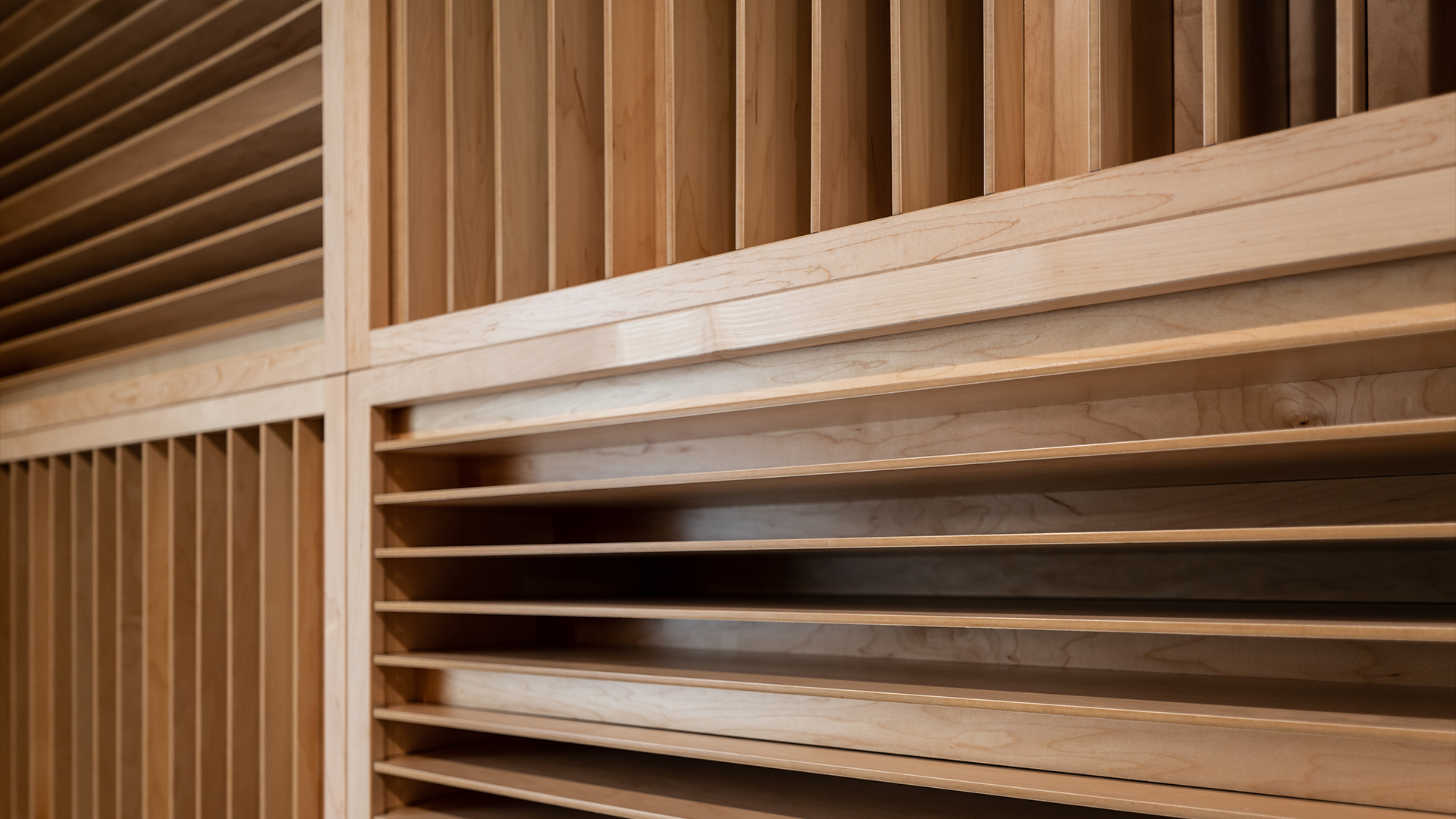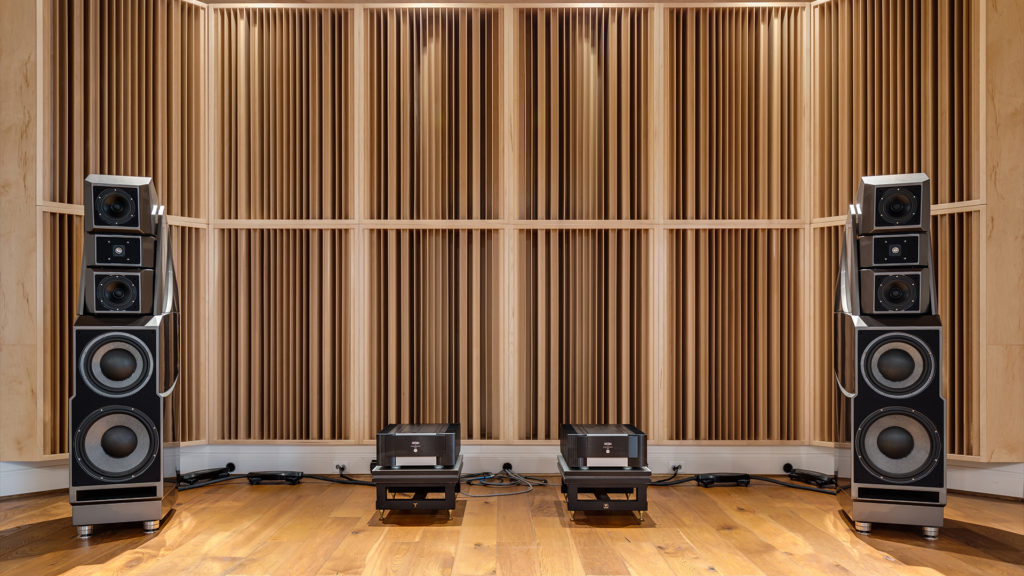
The definition of diffuse can be a complicated one when it comes to sound. We have what we term a diffuse sound field. What is the diffuse definition in this particular usage? A diffuse definition would involve first, the middle and high frequencies. Low frequency energy or wave energy is not diffused. It is reflected or absorbed but using a diffuse definition for lower frequencies is not accurate. Low frequencies are pressure waves that oscillate throughout the room in cycles. They are either reflected or absorbed. Middle and high frequency ray energy is straight line energy that does not oscillate but moves as reflections from the room boundary surfaces. The diffuse definition in the middle and high frequencies would involve minimizing the impact of those reflections from the room walls and ceiling.
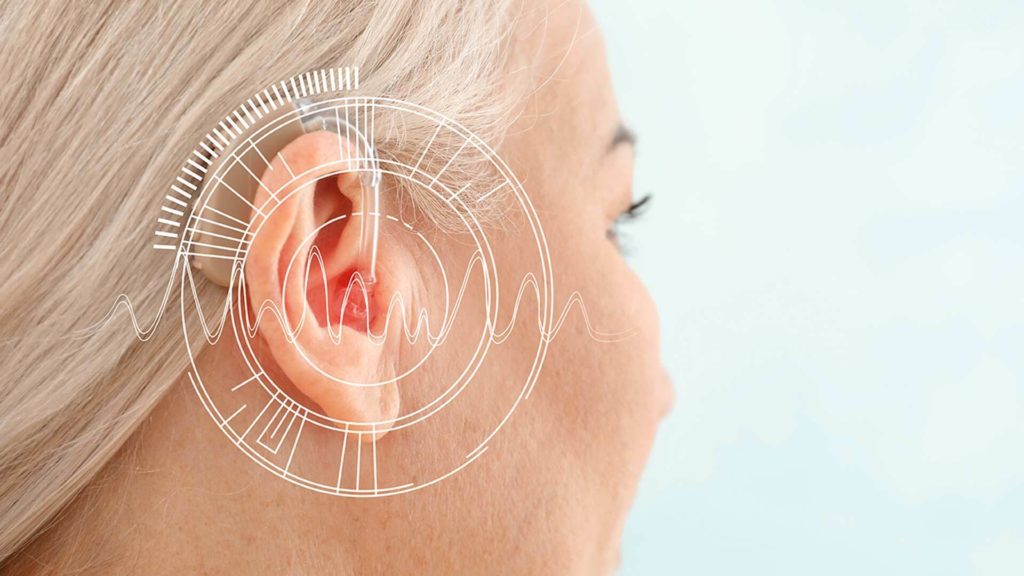
Our ear/brain hearing systems rely on reflections for many tasks. Reflections from walls help us localize distance. We can tell how far away a boundary surface is by an unconscious process which measures the time it takes for the source of sound to be reflected and then return to the original source. If you blind fold a person and face them towards a wall, get them to say something, they will be able to tell you approximately how far away the wall is from them. This ability to locate distance to objects through reflection time signature is prevalent throughout the animal kingdom. Dolphins use a more sophisticated system with echo location. It actually involves a different frequency range and a conscious effort to send sound energy out to a surface and listen for the time delay of the signal from object to source.
http://www.diffuser-calculator.com/
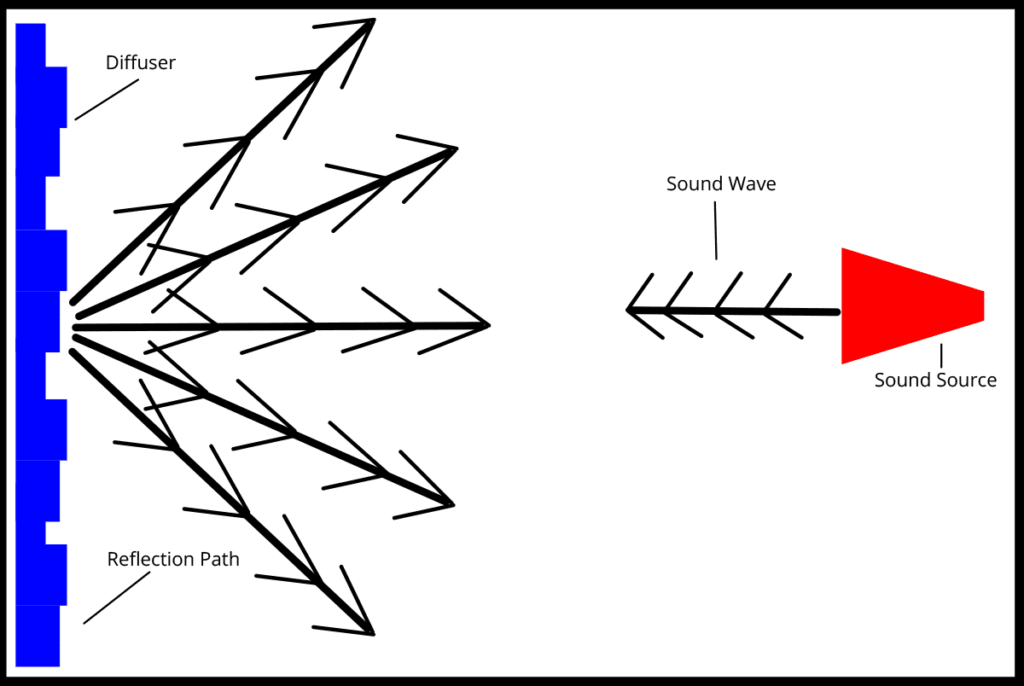
Any diffuse definition must include the use of the acoustical tools to achieve that objective. The most important tool to have in your kit is quadratic diffusion. Quadratic diffusion came to us from Bell Labs and the use of light energy. Various lenses were designed to spread light out from light fixtures. This spreading of energy was then adapted for sound using a similar procedure with different frequencies to diffuse.
https://www.acousticfields.com/product/qda-13-quadratic-diffusor-absorber/
A quadratic diffuser has a frequency response just like a speaker or amplifier. A diffuser properly applied takes energy from a source and spreads it out in a horizontal or vertical direction. The orientation of the diffuser when installed will determine the direction of the diffused energy. A quadratic diffuser that has a vertical orientation with its wells, will diffuse sound in a horizontal direction. A horizontally positioned diffuser will distribute sound in a vertical direction.
https://en.wikipedia.org/wiki/Diffusion_(acoustics)
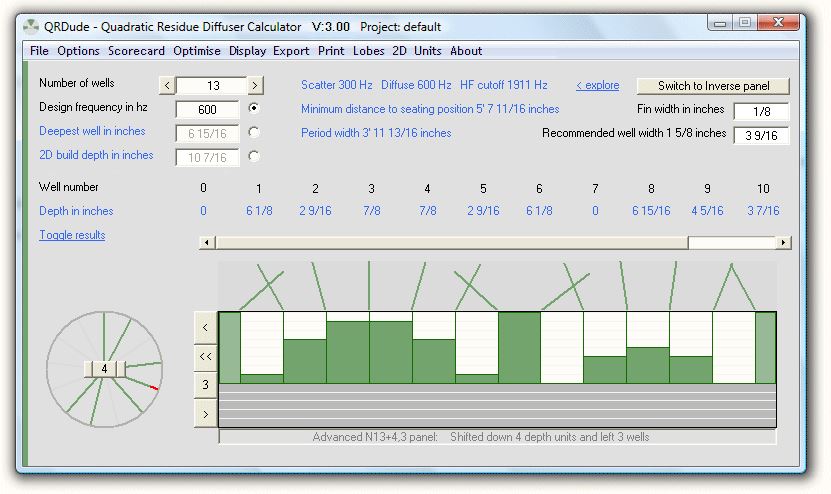
The wells or troughs of a quadratic diffuser produce the lower limits of the diffuser frequency response. They are calculated based upon a given prime number. The well or trough width determines the upper range limits of the diffuser. You must use the proper prime number to match the room usage along with the distances involved. A prime number 7 diffuser is 4″ deep. A prime number 23 diffuser is 17″ deep. Each room usage is different and each diffuser sequence is different. Care must be taken to select the proper tool for the job which is dependent on room usage and the associated sonic goals of that usage along with the available distances to allow for proper diffusion performance. Selecting the wrong diffusion prime number without the required distances to operate effectively will produce phase.
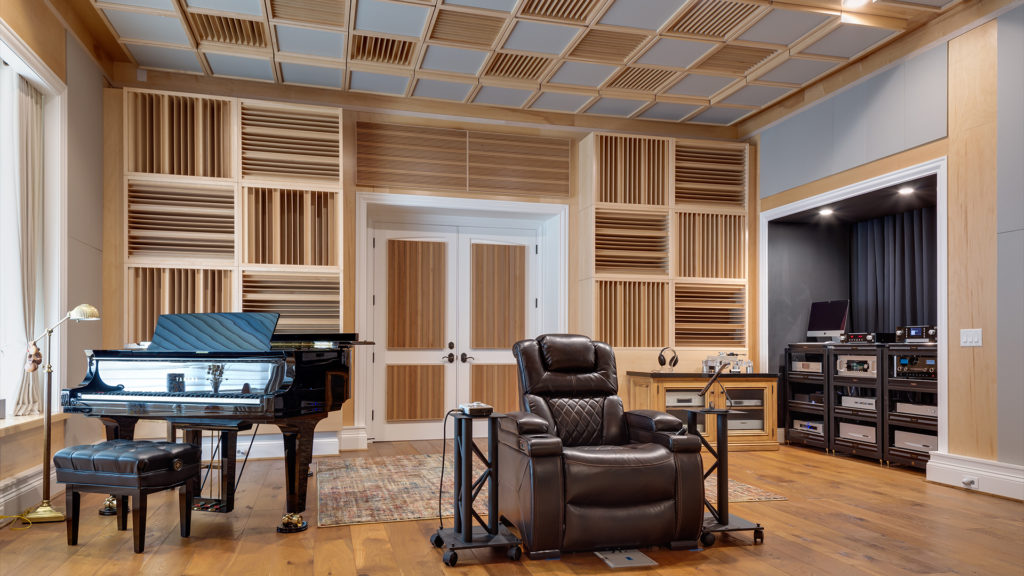
With quadratic diffusion we have two main types. We have vertical and horizontal diffusion to create different sound fields. These are defined as one dimensional and two dimensions of diffusion. A one dimensional diffuser has its well widths and depths positioned in a vertical array. With one dimensional diffusion you must have enough distance from the diffuser to your ears in order for the lowest frequency of the diffuser to fully form. When the distances are correct, a one dimensional diffuser will add space and increase the resolution of each sound field. A two dimensional diffusion array is used when distances for a one dimensional diffuser can not be met and the goal is still to reduce the impact of reflections from that room boundary surface.
https://www.acousticfields.com/product/qda-23-quadratic-diffuser-absorber/


